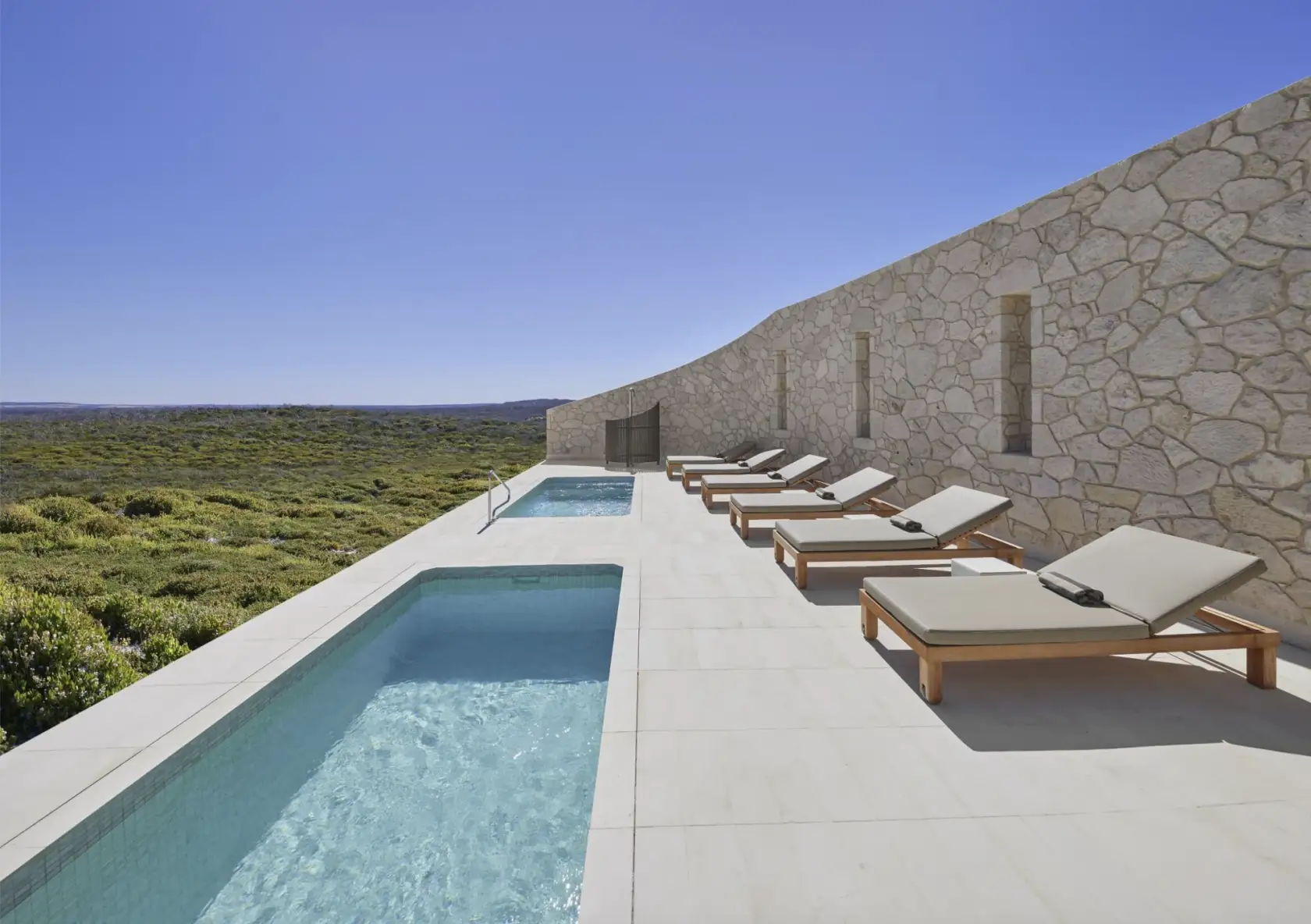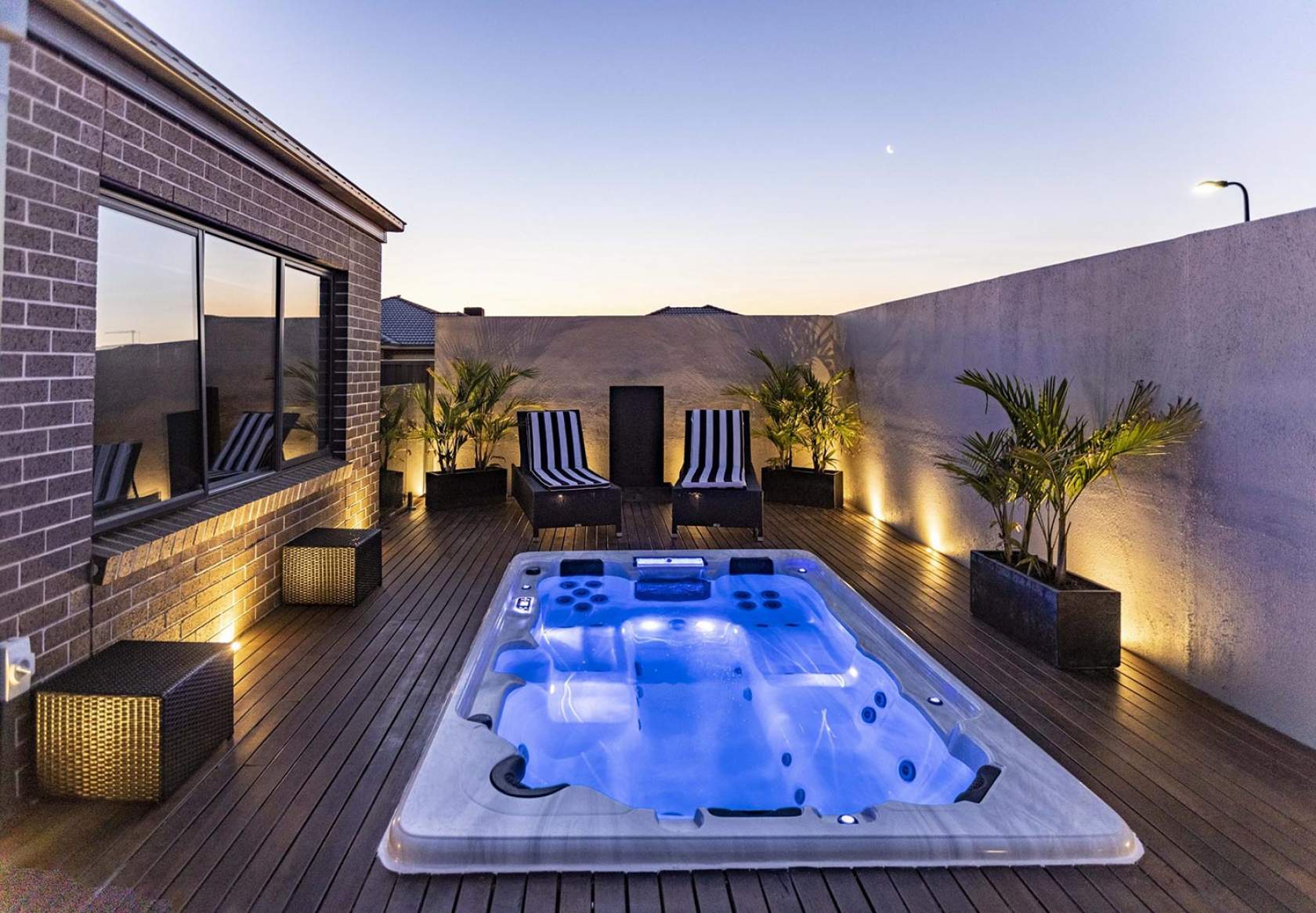

Pump it up
Electric heat pumps are another popular choice, delivering warmer water even while the sun doesn’t shine.
Electric pumps extract heat from the air and use it to produce hot water. They are available in two types: on/off and inverter.
How it works
Heat pumps feature three main parts: a fan, an evaporator and a condenser.
Water is circulated by the pool pump, passed through a filter and drawn through the pump heater. The heat pump draws in air and directs it across the evaporator. Refrigerant absorbs heat from the outside air and warm gas then passes through the pump’s compressor. The compressor increases gas heat and passes it through the condenser. The condenser transfers the gas heat to the cooler water circulating through the heater and that heated water returns to the pool. The hot gas returns to liquid form as it flows through the condenser and back to the evaporator, allowing the entire process to begin again.
On/off heat pumps are self-explanatory — they run at 100% heating capacity when on and 0% when off. Inverter heat pumps adapt compressor and fan speeds up or down de-pending on the pool temperature requirements, which can offer greater efficiency through reduced heating times and running costs.
Advantages
The major advantage of heat pumps is that they are an extremely energy-efficient alternative. This is because the pump itself requires very little energy (in the form of electricity) to operate when compared with the amount of energy (in the form of heat) that it produces.
The energy efficiency is measured by coefficient of performance (COP), a ratio of energy consumption to production. COP is expressed as a whole number and the higher that number, the more efficient the pump. For example, a heat pump that consumes 2 kW of electricity that produces 10 kW of heat energy has a COP of 5.0. This is because for every unit of electricity it takes to run, it generates five units of heat.
Sizing
Swimming pool heat pumps are available in a range of sizes.
You’ll need to consider the following factors when determining the most suitable option for your application:
Location — ambient climatic conditions will have a huge influence.
Desired temperature — this is personal choice, but as a guide the following temperatures are suitable for each type of pool:
pools used for social swimming or exercise — 24 to 28°C,
therapeutic pools — 28 to 35°C,
spa pools — 34 to 38°C.
Water volume — determine volume by multiplying the surface area (pool length x width) by the average depth including wading areas and spa (if applicable).
Shading and wind exposure — both will affect the heat losses and gains of heated water.
Position — an indoor or outdoor location.
Desired season — determine if you would like to swim year-round or just to extend the season by a few weeks in autumn and/or spring.
Installation and operation
Heat pumps can be located indoors or out, as long as appropriate airflow and ventilation are available in the chosen location. Heat pumps use a fan to draw in air and to expel it, so adequate ventilation is required for indoor installations.
Outdoor installations can be positioned at ground level (a 50 mm plinth is recommended), mounted on a wall or on a roof.
Heat pump units can be included as part of the pump and filter network or plumbed as a separate heating circuit. An average-sized residential installation will generally require a single-phase electrical connection, whereas large pools may require three-phase power.
Where possible, consider an off-peak connection to further reduce running costs.
Things to know and look for
Swimming pool heat pumps will incorporate a flow control device to prevent operation when adequate water flow is not available.
Heat pumps are thermostatically controlled and are available in analog or digital formats. While both produce the same general result, digital thermostats are inherently more accurate and offer improved display settings.
As with all pool equipment types, not all heat pumps are created equal. Some will include additional features and controls such as timeclock and/or pump interlock which allow the user to ensure the most economical operation. Make sure you are comparing apples with apples when assessing alternatives. If you need more information or advice, speak with a SPASA member.
A final note: Care should be taken when using heat pumps in salt chlorinated pools. Ensure that the production of chlorine is adjusted to suit, as excessive salt and/or chlorine levels can damage internal components. This is particularly important when operating the heat pump for extended periods during heat-up.
